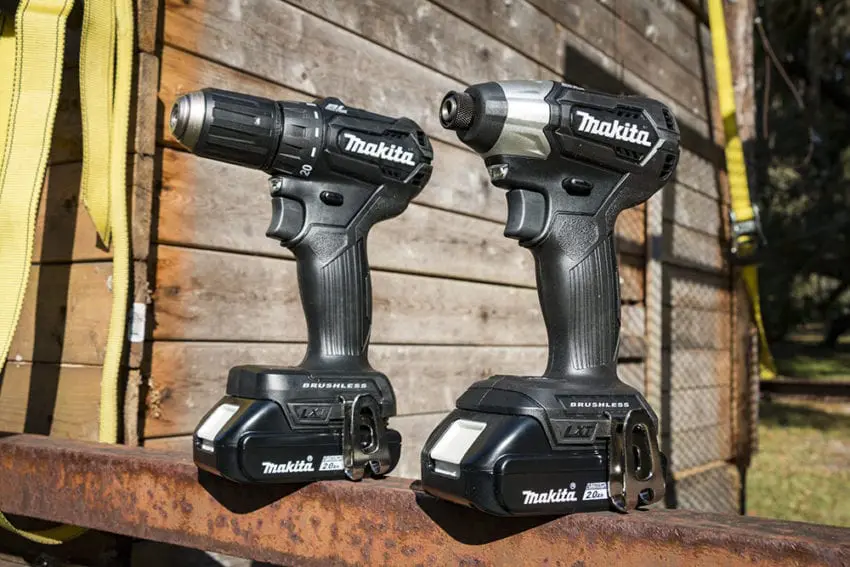We recently wrote about two of the most significant battery upgrades the tool industry has seen in recent years: Milwaukee’s realization of the 9.0 amp hour High Demand battery pack and the DeWalt FlexVolt system. What fans of Teal already know, but many may still be in the dark about, is that there has been a high capacity and flexible voltage system on the market for a couple of years already in the form of Makita 18V X2 LXT cordless tools and the 18V LXT cordless tools that run on the same batteries.
Multiple Voltages, One Battery System
Makita 18V X2 LXT cordless tools take advantage of a more simplistic design. By connecting two batteries with a series connection, you add the voltages together. Rather than creating a 36V platform, Makita found a way to create a series connection between two 18V batteries to get there. That happens on the tool itself with no adapters required.
When Makita first launched the X2 system, Pros and enthusiasts alike questioned if an onboard series connection is the best way to move to a more powerful tool. After all, some companies developed their 36V platforms to great success with more powerful cordless tools. Still, others remained committed to their 18V platforms, citing the benefit of keeping their users on one battery system.
Makita plugged along, bringing out new 18V X2 LXT tools when it made sense but still focusing on expanding their 18V LXT system, which is the workhorse of their cordless lineup. The initial advantage of the Makita 18V X2 LXT system is in its inherent design that gives users the ability to purchase more powerful 36V tools while using the batteries they already own.
Brushless Motors
The advantage has become greater over the past couple of years on two fronts. First, brushless motors have become more prevalent. This has opened up new classes of tools and solidified others that were borderline. Makita has been positioned to handle both thanks to their 18V LXT and 18V X2 LXT platforms. The technology has even afforded the ability to go smaller with the 18V LXT Brushless Sub-Compact tools.
Watt Hours
Second, battery capacity has expanded. Most brands now offer 5 amp hour batteries and a few – including Makita – have 6 amp-hours. Milwaukee pushed the limit with their 9.0 amp hour battery. On the 36V front, most stop at a 4.0 amp hour battery. By taking two 18V LXT batteries to an 18V X2 LXT tool, you can step up to 36 volts with 6 amp-hours.
So what’s the big deal?
It’s not as obvious until you look at watt hours, which it the total amount of energy available to do work in a battery system. You get it from the equation:
Nominal Volts x Amp Hours = Watt Hours
For Milwaukee’s 9.0 amp hour battery and DeWalt’s FlexVolt 3.0/9.0 amp hour battery, you get a solid 162 watt-hours. With Makita 18V X2 LXT tools, you can take it to a total of 216 watt-hours – a full 33% more capacity than those two options. Compared to the 36V, 4 amp-hour options, it’s an additional 50% capacity.
Is There a Continued Need for the Makita 18V X2 LXT Line?
As brushless motor and battery technology has improved, more cordless tools are able to operate on the 18V platform quite effectively. Tools like Makita’s XWT07 18V LXT Impact Wrench are powerful – 1250 FOOT pounds of torque powerful! So does that mean the 36V platform is on its way out?
Not hardly. Aside from the fact that there are always new tools to bring into the cordless realm on the construction side, Makita has also expanded well into outdoor power equipment. With a full line of cordless OPE to supplement their 4-stroke gas options, Makita has offered their users an incredible amount of versatility all without stepping away from the 18V LXT battery.
With tons of potential left in both Makita 18V X2 LXT cordless tools and the 18V LXT line, don’t expect to see Makita changing direction anytime soon.









